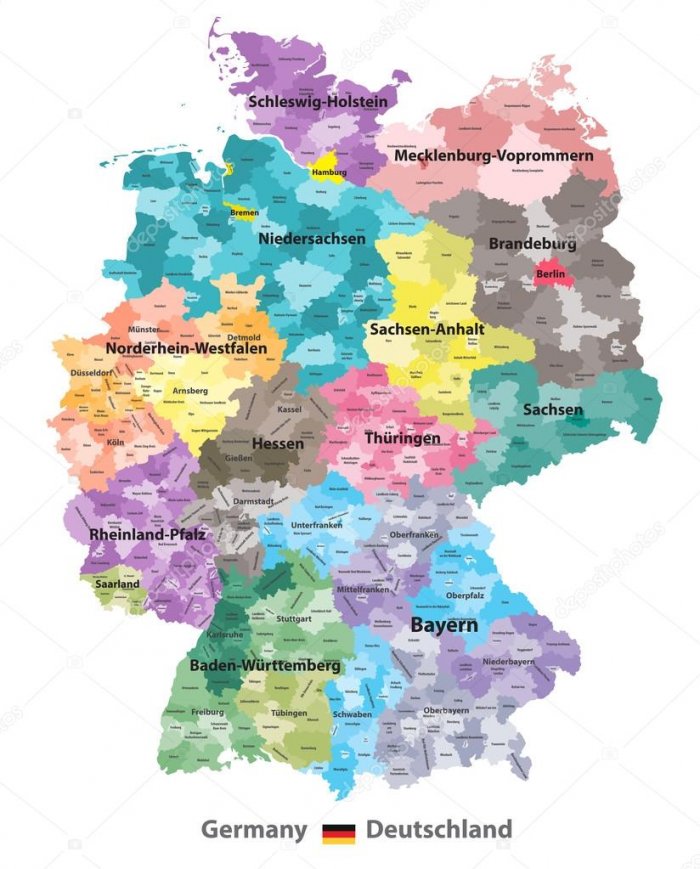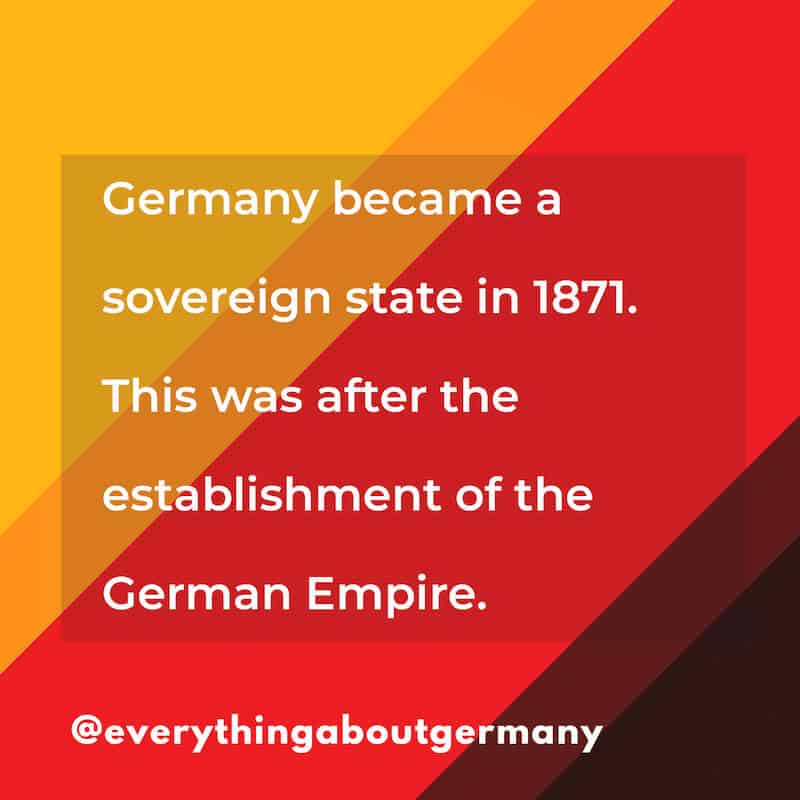15 Interesting Geography Facts About Germany

We take pride in providing authentic travel recommendations based on our own experiences such as unique images and perspectives. We may earn a commission when you purchase a product or book a reservation. Learn more ›
Written by Kyle Kroeger
Geography facts about Germany are interesting, but geography is hard. We all know that geography can be tough to learn, but it’s also important for understanding the world around us. Luckily, there are a lot of geography facts about Germany that are easy to remember and fun to learn!
Few people find geography interesting, but geography facts about Germany are not boring. If taught correctly, geography can be one of the most fascinating subjects in school.
Germany is an incredible country with a rich history (more good than bad… believe it or not) and culture. We came across a comedic video packed with many interesting facts about Germany. Some are trivial, some not trivial.
Geography in Germany
Germany’s geography is one of its most fascinating features. The terrain is varied, with mountains, lakes, rivers, plains, and forests. German geography has had a significant influence on the country’s development throughout time.
Since at least 10,000 BC, Europeans have inhabited Germany, moving from Siberia to Poland. This movement consisted of nomadic herders who would later settle in countries to the east.
The geography of Germany has influenced the economy for a long time. Germany is a country that its geography has shaped. People have lived in the area for centuries and made their living from it by fishing on rivers and seas.
German geography is interesting because it has many types of geographical features, including mountains, lakes, rivers, plains, and forests.
Map of Germany

The Zugspitze is the highest mountain in Germany and has a total altitude of 3,935 m at its peak. The highest mountain in Germany is the Gugspitz Peak. It is one of Germany’s best attractions.
Alternatively, you may take a cable car to the top of the mountain and enjoy spectacular views of the Alps and the picturesque countryside.
Take a look at some of these breathtaking panoramic vistas. Germany is in the center of Europe and shares borders with nine other countries, including Germany, Poland, Czech Republic, Austria, Switzerland, France, Lichtenstein, Luxembourg and Belgium.
Watch the video created by the incredibly popular “Geography Now” below.
History of Germany: From the Weimar Republic to Today

In 1919, the Weimar Republic was built as a democratic state, but slowly, Germany began experiencing economic and cultural issues. By 1929, the government was losing much of its stability as the world entered a period of depression.
The National Socialists were growing in strength by 1932 when Adolf Hitler’s NSD Party was founded. The Nazi Party soon established a political organization and refrained from persecuting the Jewish community.
In addition to The Holocaust, Nazi governmental policies and enlargement measures eventually led to World War II. This later destroyed Germany’s political structure, economy, and social system.
In 1945, Germany was divided by communist and democratic powers as the Cold War began. Germany was originally planned to be governed as a single unit, but Soviet policies rapidly took hold in eastern Germany.
The geography of Germany has been shaped over time by those who have inhabited it – from nomadic herders to its post-war division.
East and West Germany were divided by the Berlin Wall in the aftermath of World War II until 1990. Their geography is in stark contrast to one another, with East Germany being poorer.
France, the United Kingdom, and the United States occupied West Germany, while the Soviet Union occupied East Germany. Remnants of the Berlin Wall still exist in Berlin. Today, Germany is a modernized democracy considered a major economic powerhouse and Europe’s richest country.
It is one of the largest exporters in the world, and its economy is heavily based on exports compared to other European countries. Its economic geography has contributed to its modernized culture, which has given way to a largely service-based industry.
Government of Germany

The country’s name, the Federal Republic of Germany, is derived from the Latin word Germania. Its bicameral parliament comprises the Federal Council and the Federal Diet.
In this country, there are 16 states for local government. The German Constitutional Court, established under the German Constitution, and the State Constitutional Law Court are federal courts.
There is a state commander, Germany’s presidential representative, and a government chief known as the chancellor.
Geography Facts About Germany
Here are some quick facts about Germany that are interesting but also important if you’re studying geography or history.
- Area: 357,022 sq km (137,847 sq mi)
- Language: German (official and most widely spoken), Austro-Bavarian dialects (Czech orally by a native minority; Sorbian oral and written by a native minority; Danish, Low German preferred or Vistula delta Silesian; and Romani widely used
- Population: 83.24 million (2020)
- Religion: Protestant 34%, Roman Catholic 34%, Muslim 3.7%, unaffiliated or other 28.3%
- Climate: temperate and marine; cool, cloudy, wet winters and summers; occasional warm mountain (foehn) wind.
- Germany Capital: Berlin
- Berlin Population: 3.645 million (2019)
- German Flag Colors: The colors of the flag of Germany, according to Article 22 of the German Basic Law, are black, red, and gold.
Now that we’ve outlined the important details about the Federal Republic of Germany let’s get into some fun facts.

15 Interesting Germany Geography Facts You Need to Know
- “Germany’s highest mountain, Zugspitze, is 9,718 feet high.”
- “Germany has a population of about 80 million people.”
- “In 1965, the capital of West Germany was moved from Frankfurt to Bonn. In 1990 the capital was again changed back to Berlin.”
- “In 1946 there were 12 independent states in Germany.”
- “The world’s largest inland port is the Port of Hamburg with a water surface area of 650 km² (250 sq mi).”
- “Frankfurt is the financial capital of Germany.”
- “Germany became a united country in 1871 under Bismarck, the Chancellor of the North German Confederation.”
- “50% of Germany is covered by forests.”
- “The first motorway was built in 1931 between Cologne and Bonn.”
- “Germany has the second-highest number of women in senior management positions.”
- “Approximately 80% of the country is flat. About 25% is used for agriculture.”
- “The Rhine River flows through Germany.”
- “German is the official language in Germany and Austria, but there are many other minority languages spoken, including Turkish.”
- “Germany has an ocean coastline of 7,770 km (4,825 mi) with the North Sea to the east and the Baltic Sea to the north.”
- “The Deutsches Museum in Munich is one of the most famous science museums in Europe. It contains 14 exhibition halls with 300,000 exhibits.”
Germany is a European country with important geographical facts that help us understand how it came to be. Geography has influenced our history as humans—it is fun and surprising! We can use this knowledge to help other countries that need help, like refugees fleeing war-torn countries.
The largest country in the European Union makes up just over 1/4 of Central Europe and is home to major metropolitan cities and many rivers and lakes.
See Related: Germany Flag vs Belgium Flag
Other Interesting Germany Facts to Know
Beyond geography, there are many things to know about the Federal Republic of Germany.
Facts about German people

This European country is well-known for its illustrious poets, such as Albert Einstein, who were part of the early writers era. Germans enjoy going to museums, concerts, and theaters.
Germany’s famous composers include Hans Zimmer, Ludwig von Beethoven, and Johannes Brahms, among many others. Football, tennis, and swimming are the most popular sports in Germany.
The Bundesliga, the German national premier soccer league, is well-known, and Bayern Munich and Borussia Dortmund are popular among non-German speakers.
Sebastian Vettel (Formula 1), Bastian Schweinsteiger (soccer), Anna Schaffelhuber, and Felix Neureuther (ski) are frequently preferred by German speakers. Most of their athletes are more likely to be recognized in Germany.
See Related: Things to Do in Dortmund, Germany
Facts about German Food
German people enjoy consuming bread made from wheat and rye flour. The main exporters of German cuisine are sauerkraut sausages and brezel. Germans eat Potatoes frequently, but pasta dishes are also well-liked, especially among the younger generations.
Vegetarian dishes are available in all eateries, and several restaurants offer meat-based alternatives. Schweinebraten (roasted pork knuckles) or Schweinsbraten (roasted pig’s knuckles) are well-known in Southern Germany, but Rinderbraten is more popular in Northern Germany.
See Related: Famous Historical Landmarks in Hamburg
FAQ
How is geography different in Germany?
Germany is in Western and Central Europe. The geography of Germany is mostly low-lying plains, the upland regions of the Bavarian and Ore Mountains mountain ranges- the country’s main geographic features. Many rivers are running across its geography.
The most important river is the Rhine, which forms the boundary between France and Germany. Germany’s climate is varied, with warm summers and cold winters.
What geographical facts are there about the Federal Republic of Germany?
One fun geographical fact about Germany is its dense network of motorway autobahns. The US has roughly 4 million miles of roads, whereas Germany has around 46,000+ miles of roads (8% more than the US).
Another geographical fact about Germany is its coastline on three seas: the North Sea and the Baltic Sea to the northeast and its south, along with Lake Constance.
Related Resources
Please sign in to leave a comment.
